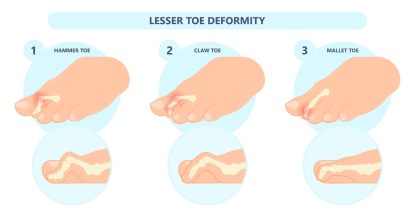This Activity Will Transform Your Fat Cells So They Burn More Calories and Protect Against Diabetes

It’s been ingrained in our brains that body fat is the enemy. We need to get rid of as much of it as possible, right? In reality, it’s more about transforming bad fat into good fat. In a process called “beiging,” exercise can turn white fat into cells that resemble brown fat — which burn more calories and may protect you from diabetes and heart disease.
Before we dive into the research, it’s important to understand the difference between white and brown fat. White fat, or white adipose tissue, is fat that gets stored as energy. Most of the fat in our bodies is white fat, and many researchers believe that it acts as insulation.
Brown fat, or brown adipose tissue, generates energy as heat. (It gets its color from iron-rich mitochondria, which are the energy powerhouses of the cell.) The purpose of brown fat is to create body heat and maintain body temperature. It does this by breaking down glucose and fat molecules. As a result, brown fat burns more calories and activates in cold temperatures.
That doesn’t mean you should try to build up your brown fat by sitting in an ice bath! And you don’t necessarily have to have more brown fat. Research suggests a third option: beige cells. Beige cells, or beige adipose tissues, form when white fat begins to act and look like brown fat.
How Exercise Trains White Fat to Work Like Brown Fat
According to Siddhartha Angadi, an Assistant Professor of Education in the Department of Kinesiology at the University of Virginia, plenty of research demonstrates how exercise transforms fat. “Exercise makes your fat fit, if that makes sense. And it’s kind of cool,” he says. “Data and investigations that show that when you exercise, you beige the white fat, so it starts to look more like brown. It’s not white-brown, but it’s not white-white. And so, it fits somewhere in the middle. But that’s what gives it its beneficial metabolic properties.”
Angadi says that a lot of this knowledge comes from a 2015 study published in the Diabetes Journal. For the investigation, a research team at Harvard Medical School conducted an experiment on rodents. They wanted to know how fat cells benefit from exercise.
To answer this question, the team had one group of mice exercise regularly. Another group of mice received a high-fat diet and remained sedentary. The mice on a high-fat diet gained weight and became diabetic. The researchers then transplanted fat from the exercising mice into some of the sedentary mice.
After nine days, they noticed something extraordinary. The mice with transplanted fat became healthier. Their blood glucose levels dropped, and they became more sensitive to insulin. The effects of the high-fat diet essentially got reversed.
In another study from the Journal of Experimental Biology, researchers explained how exercise affects white fat. They said that it causes individual cells to shrink and mitochondria to become more active. In addition, exercise training causes fat cells to secrete chemicals that improve metabolic health.
How to Train Your Fat
If you’re ready to transform your fat cells into little metabolic machines, you’ll need to increase your exercise. The American Heart Association recommends that adults perform at least 150 minutes of moderate-intensity aerobic exercise per week. That might seem like a lot, but that’s just 21 minutes a day. If you want a rest day, you could do 25 minutes of exercise for 6 days instead.
The AHA suggests that you do muscle-strengthening movement on at least two of those days. Of course, it’s important to start small and increase the amount and intensity of physical activity over time. Start with something as simple as walking, and when you feel ready, take a dance class or spin class! A gradual approach will keep you from doing too much at once, which could be dangerous. It will also help you make exercise a healthy habit. With consistency, you’ll be able to train yourself and your fat cells, too!













